Between their great snacks, candy, and wagyu beef, Japanese people know good food. Even if you’re an experienced sushi eater, it may be a bit of a challenge to tell the difference between the many different forms of sushi. Today, I’m going to answer a question that burns in the minds of many sushi fans.
What’s the difference between your typical roll of sushi and hand roll sushi?
The main difference between roll and hand roll sushi is that roll sushi consists of an even roll of sushi that has been cut into several pieces for ease of consumption whereas hand roll sushi is rolled into a single cone that is made to be served to a single patron.
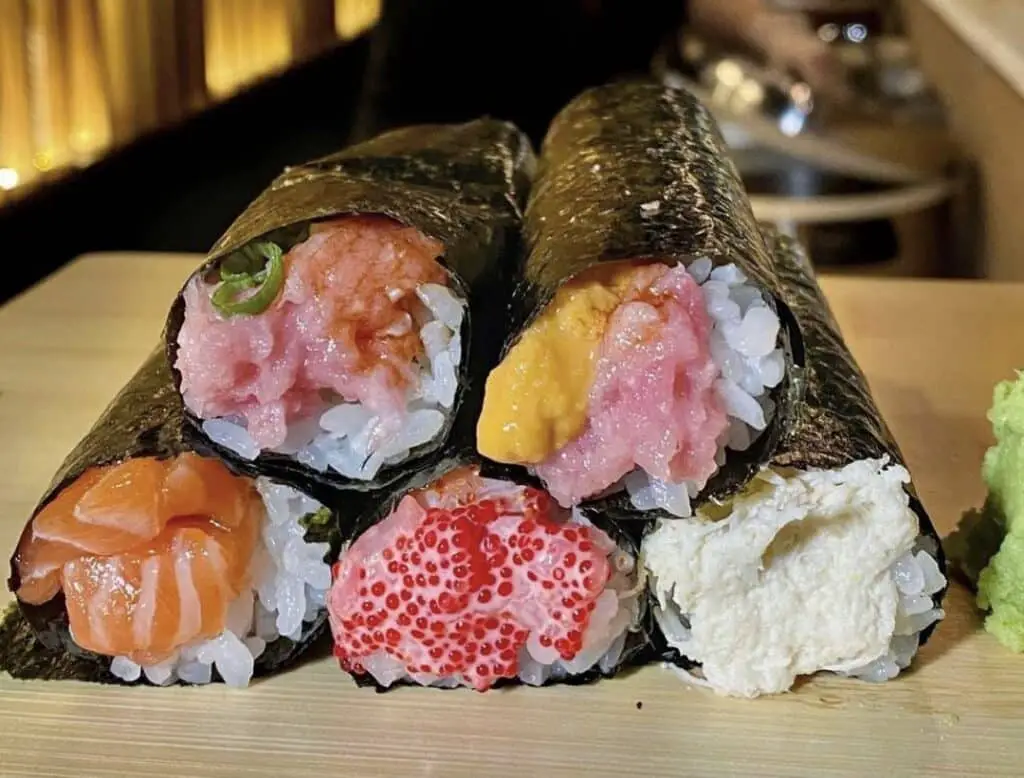

While that may be the basic rundown of the differences between these two kinds of sushi, there are a few finer points that you may be interested in that we simply can’t sum up in one paragraph.
After taking a closer look at the difference between these kinds of sushi, I’ll address some related questions.
Difference Between Roll and Hand Roll Sushi
To give you a better idea of how these two kinds of sushi differ from one another, I’m going to take a look at each of them individually, starting off with roll sushi, and then moving on to hand rolls.
Roll Sushi
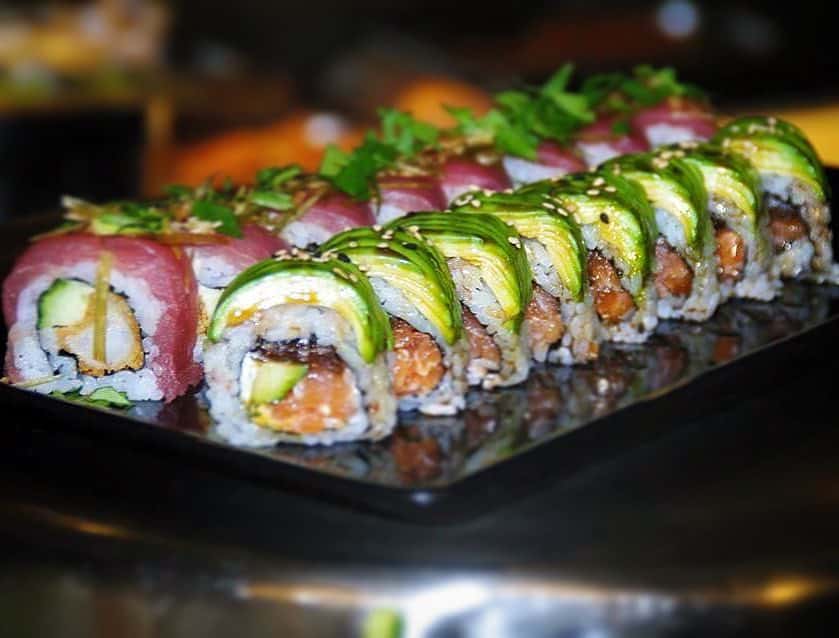
Roll sushi is known as maki, and this comes from the Japanese word maku, which refers to wrapping. Roll sushi is surrounded by nori (seaweed) and then it features a layer of rice around raw fish, though this fish can also be replaced by alternatives like avocado or even fruit, in some cases.
To ensure that roll sushi has a perfect cylindrical shape, it is rolled up using a bamboo mat, and the tidiness of the roll depends on the skill of the sushi chef preparing it. If you’re making maki at home, then there’s no problem with your roll being a little more sloppy, though most restaurants will have pretty consistent rolls.
Once the sushi has been fully rolled up, it is removed from the bamboo mat and then placed on a cutting board, where it will be sliced into either six or eight pieces. This depends on the size of the roll itself and whether the chef prefers to serve larger pieces of maki or smaller ones that are easier to eat in a single bite.
While it may seem a little confusing, every piece of the chopped up roll is also known as a roll, and it is customary for a table of people to split rolls so that everyone can try out different kinds of sushi. Of course, there’s nothing stopping you from having an entire roll to yourself if you’re not dining with a party of people.
Hand Roll Sushi
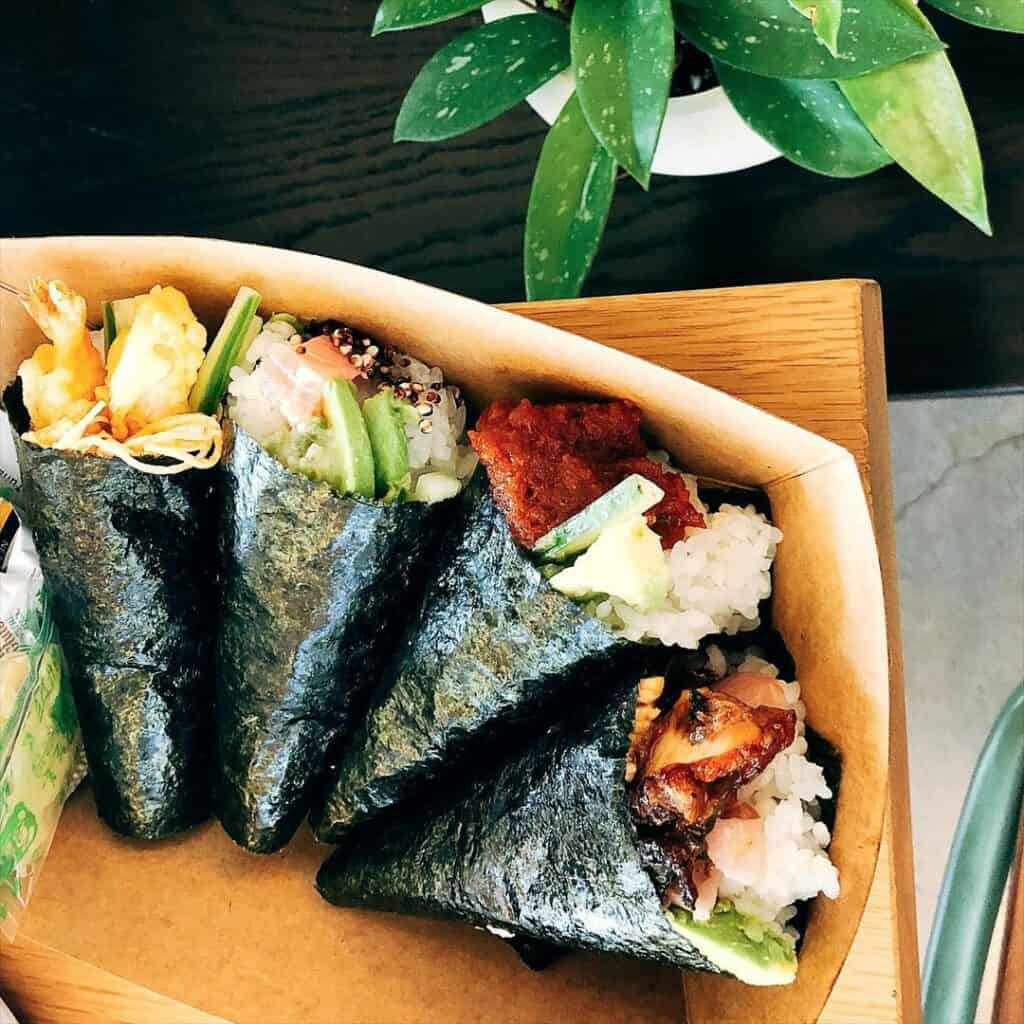
Sushi hand rolls are known as tamaki, and they are more commonly served to a single individual. While the rice and fish in a hand roll will still be wrapped up in seaweed, the difference lies in how the seaweed is wrapped up in the first place. As the name suggests, these rolls are typically wrapped up by hand instead of a bamboo mat.
This results in the trademark conical shape of hand roll sushi, almost resembling a burrito or an ice cream cone, though with far different ingredients. Unlike maki sushi, hand rolls are much quicker to prepare because of the less exacting tolerances for their preparation, though experienced sushi chefs may be able to prepare them in a similar amount of time.
Due to their size, one or two hand rolls are typically sufficient to satiate the hunger of most clients. This, combined with the fact that they aren’t cut into multiple pieces, is what makes them much more suitable for serving an individual instead of a group of people. They’re also a good choice if you’re in a group and you’re not comfortable sharing your food with others.
One thing to consider is that the major difference between maki and temaki is in how each of them is served rather than in the ingredients they contain. For example, you can have a salmon roll and a salmon hand roll with the exact same ingredients in them. Of course, there are limits. You probably won’t find A5 wagyu in a hand roll.
How to Make a Salmon Sushi Roll
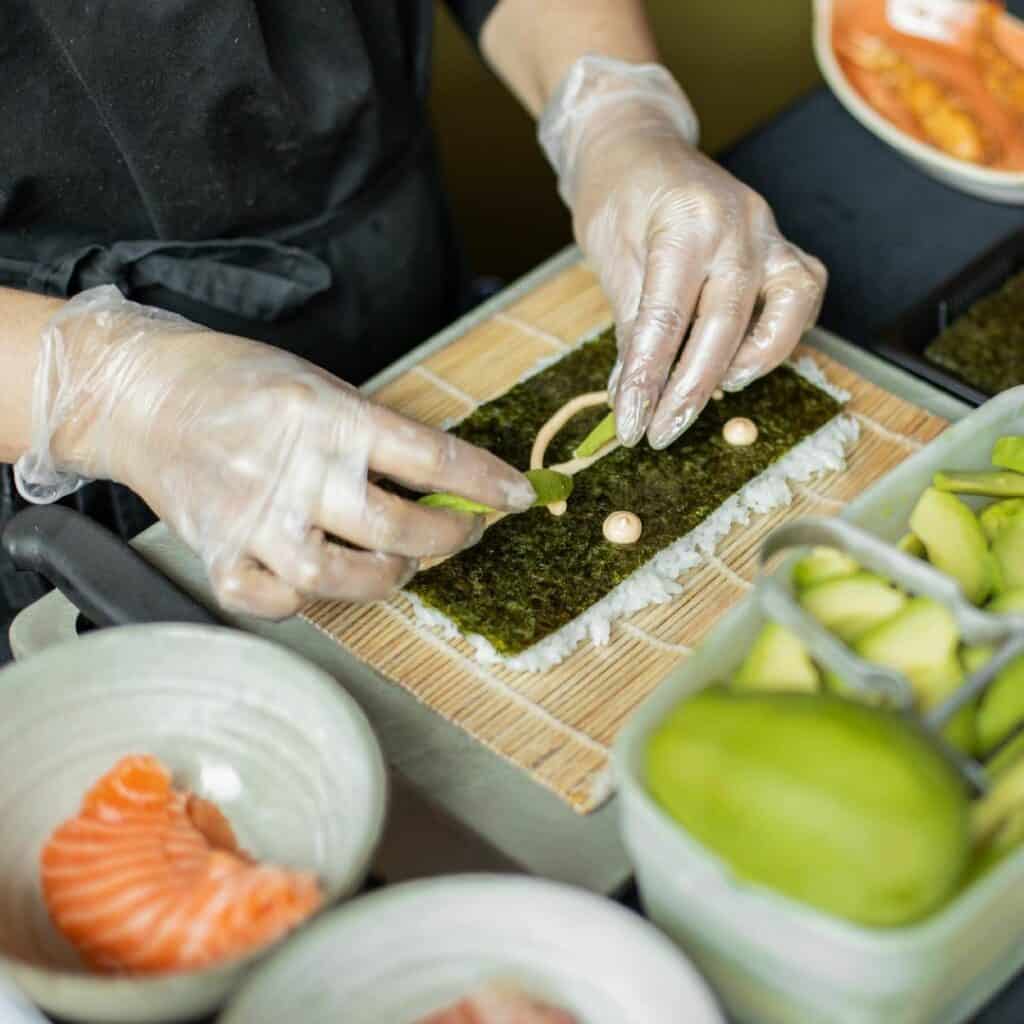
To prepare the rice for your sushi, you’ll need to boil water and then add the rice. Make sure that you stir it well. Once you’re done stirring, you can cover it and lower the heat. Leave it simmering for about 25 minutes. While this is happening, mix three tablespoons of sugar, rice vinegar, and 1.5 teaspoons of salt in a bowl.
Once the rice is done, add in the mixture and mix it well. To start rolling the sushi, put the nori down on your bamboo mat and wet your hands. You should then evenly distribute the rice over the top of the nori. Make sure not to put down too much rice so you don’t drown out your ingredients.
Add sliced raw salmon down the middle of the roll along with thinly sliced cucumber. After that, roll up the sushi with the help of the bamboo mat. Take it out, and then slice it into six or eight pieces.
How to Make a Salmon Hand Roll
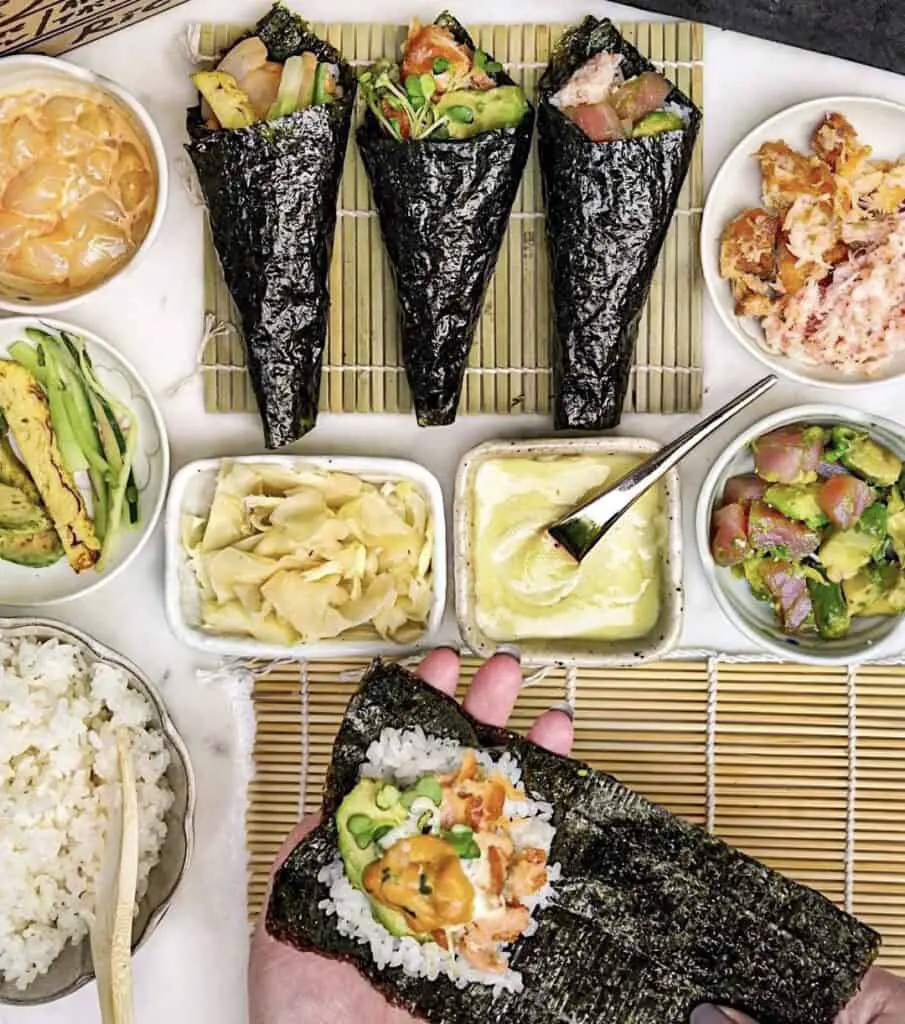
First, prepare your sushi rice in the same way that you would for a typical sushi roll. Thinly slice carrots and cucumbers into slivers that will be easier to chew on when you take a bite out of your salmon roll.
Next, cut a nori sheet in half diagonally. After that, wet your hands to make sure that the seaweed doesn’t stick to them. Spread the rice over the sheet until it forms an even layer, though leave about an inch of space around the edges of the nori.
In the middle of the rice, press down a bit to form a pocket where you can place the salmon, carrot, and cucumber.
To roll the hand roll, start at the top right corner and roll down towards the salmon and then roll it to the left to create a cone shape. Wet the edge slightly and then press down on it to create a seal.